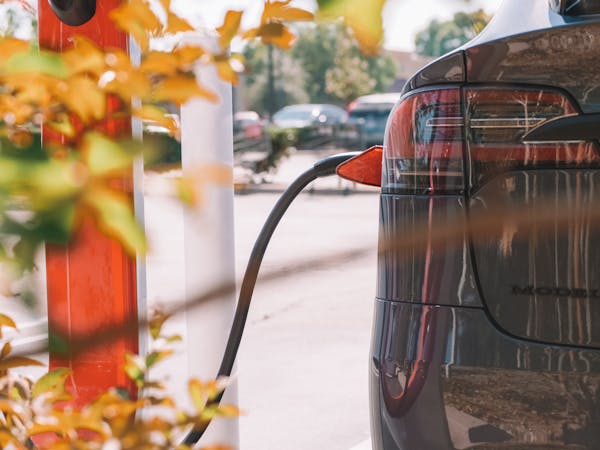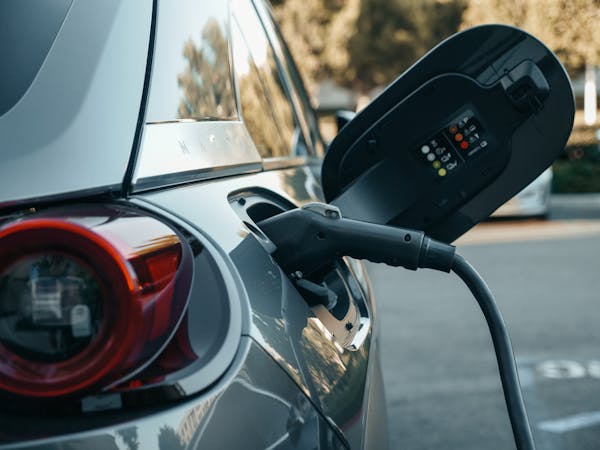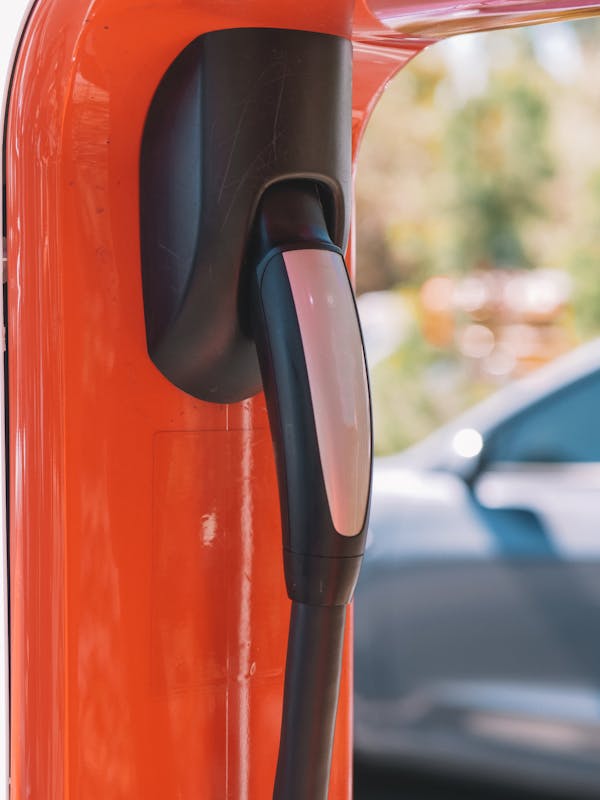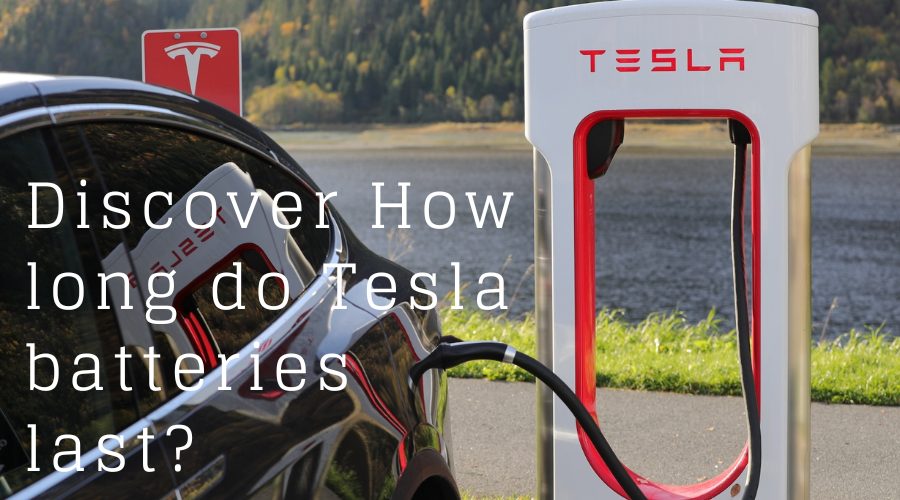Get the answer to your burning question: how long do Tesla batteries last? and the secrets to maximizing their life. Learn about the battery warranty and available charging options for maximizing performance and efficiency. Get the facts from experts, learn about the different types of batteries and find out which one is best for you. Read the article and learn more.
The Tesla electro-vehicle has revolutionized the way people drive, as it is powered entirely by a rechargeable battery. The concept of an electric car has been around for many years, but it wasn’t until the emergence of Tesla’s vehicles that the idea became a reality. This vehicle boasts a range of up to 300 miles on one charge, making it perfect for those who are looking for luxurious transportation without having to worry about refueling.
Not only does this electro vehicle have an impressive range, but it also features several high-tech amenities such as autopilot and an interactive dashboard display. Plus, drivers can take advantage of convenient charging options when needed, including both home and public charging stations in locations all over the world. As if that weren’t enough, Tesla’s vehicles come with incredible performance capabilities from their electric motors and cutting-edge battery technology.

Electric cars are becoming more and more popular, as people are looking for ways to reduce their carbon footprints. One of the most well-known electric cars is the Tesla, which has become a symbol of innovation in the auto industry. However, one of the biggest questions on many people’s minds is: how long do Tesla batteries last? This article will answer that question by providing information on the average lifespan of a Tesla battery and other important information about them.
Tesla Battery Basics
Tesla batteries are the power behind the brand’s world-renowned electric vehicles, providing drivers with efficient and reliable power. Tesla batteries are made up of thousands of small lithium-ion cells, which combine to create a large battery pack that powers the vehicle. This battery technology is designed to provide maximum efficiency and range while still being lightweight and compact enough to fit into most modern vehicles.
As the world of electric vehicles continues to grow, Tesla is leading the charge with their innovative batteries. Powered by 6,831 individual Li-ion cells, the battery packs weigh about 900 pounds and offer an impressive cycle life. This means that you can get a large number of charges before needing to replace or recharge your car’s battery.

Tesla’s battery packs feature several different components, including cooling systems, cell groups, control modules, wiring harnesses, and a Battery Management System (BMS). The BMS is responsible for managing all aspects of the battery pack and helps ensure it functions effectively by monitoring its performance. Additionally, Tesla has developed unique technologies such as their Powerwall home energy storage system to further extend the life of their batteries.
However, like most things, these batteries age with time which is known as “calendar life” and it refers to how long a battery will last on its own without being used. Despite this potential aging issue, Tesla has done extensive research and development in order to ensure that their batteries are some of the best around for both performance and longevity.
How long do Tesla batteries last if you drive?
Tesla batteries are becoming increasingly popular in the electric car market, as they offer excellent performance and reliability. However, one of the most common questions people have is how long do Tesla batteries last?
The answer to this question depends on a variety of factors, including driving habits, climate conditions and other environmental factors. Generally speaking, Tesla’s battery packs are designed to provide up to 300 miles of range on a single charge. With proper care and maintenance, these batteries can last for up to five years or more. Additionally, some owners have reported that their Tesla batteries may still be operational after 10 years or more of use!
Tesla also offers an optional extended warranty that covers replacement costs for any battery pack found to be defective within 8 years from the original purchase date or 125000 miles (whichever comes first).
Tesla’s Model 3 Standard Range offers a range of 267 miles per charge, while the Long Range model offers 334 miles and the Performance comes in at 315 miles. The Model S provides 375 miles per charge. These figures are based on EPA estimates with an 85 kWh battery pack, and customers can expect to get close to these figures with regular charging.
These numbers speak to just how efficient Tesla batteries are compared to other EV offerings on the market today, but for exact longevity information, customers must factor in their own driving habits as well as climate conditions and other variables that affect battery life over time.

Tesla batteries are renowned for their long-lasting capabilities, designed to last up to 300,000-500,000 miles. This makes them a reliable choice for those looking to buy an electric vehicle with a longer battery life than most other vehicles on the market. Tesla’s lineup of cars come standard with a 90kWh battery pack that is capable of providing over 250 miles of range per charge.
In addition to this impressive range, Tesla batteries also feature advanced cooling systems that help keep the temperature within ideal levels which helps maximize battery longevity and performance. Further contributing to its long-lasting abilities is the fact that all Tesla batteries come equipped with an 8 year or unlimited mile warranty from the manufacturer.
Tesla have been actively improving their electric car technology since their early days in 2003 and this has resulted in longer lasting and more reliable batteries for their cars.
Factors That Affect Battery Lifespan
Tesla batteries are an important part of the electric cars that have been revolutionizing the automotive industry. As such, it is important to understand how their lifespans can be affected. There are a number of factors that can affect the lifespan of a Tesla battery, ranging from temperature to driving habits.
The first factor to consider when examining a Tesla battery’s lifespan is its charging behavior. Overcharging and undercharging a Tesla battery can shorten its life significantly, as excessive heat buildup from either practice causes physical damage to the cells and shortens the battery’s overall capacity. In addition, leaving a Tesla parked in extreme temperatures for prolonged periods of time can also cause cell degradation and reduce its capacity over time.
The most significant factor in determining Tesla battery life is temperature. Extreme temperatures, both hot and cold, can cause degradation in the lithium-ion cells and reduce battery life significantly. In colder climates, especially during winter months when temperatures drop drastically overnight, it’s important to keep your car plugged in with an appropriate trickle charger if you don’t plan on using it for extended periods of time to prevent excess wear on the battery cells.

In addition to temperature, driving habits play a large role in determining battery lifespan as well.
Another key factor that affects a Tesla battery’s lifespan is depth of discharge (DoD). If one frequently drains their battery past 90% DoD it will cause irreversible cell damage that decreases total energy storage capacity over time.
Capacity degradation occurs due to continued charging and discharging cycles, impacting the amount of energy that a battery can store over time. This problem is amplified if the Tesla isn’t charged or discharged fully during each cycle – leading to an overall decrease in performance. Calendar aging can also have an effect on Tesla batteries; this process happens even when batteries are not in use and refers to gradual deterioration in performance due to natural chemical reactions within the cells.
How to Maximize Tesla Battery Life
Tesla electric vehicle batteries are the backbone of their vehicles. They’re powerful, efficient, and reliable. But, like any other battery, they require proper maintenance to maximize life. In order to keep your Tesla running as long as possible, there are a few simple steps you can take to increase battery life.
First and foremost is driving habits – drive conservatively! Fast acceleration and hard braking will reduce the range of your Tesla drastically over time.
When it comes to maximizing the life of your Tesla’s battery, understanding the importance of avoiding very high and low states of charge is key. All batteries have a lifespan that can be extended by ensuring that you don’t keep them at either end of their full charge range. In particular, when it comes to Tesla batteries, experts recommend avoiding voltages over 4.15V cell (about 95 percent state of charge [SOC]) as this can reduce the lifespan of your battery significantly.
Tesla offers drivers several tools to help them monitor their car’s battery performance including the Battery & Charging section in their mobile app, which provides an estimate for how much range is remaining on any given trip along with other valuable information about charging habits and trends.
Charging faster than about C2 (two hour charge) can reduce the cell’s life span significantly over time. This is because when charging quickly, heat builds up in the cells which causes irreversible damage due to chemical reactions taking place in them. To protect your battery from damage, it is recommended that you use a charger with an output current below C2 whenever possible.
When it comes to optimizing the life of your Tesla battery, one of the most important things to consider is avoiding charging at temperatures below 0 C. Extremely cold temperatures can be damaging to the battery, but there are steps you can take in order to maximize its life expectancy.

One of the best ways to maximize your Tesla battery life is to avoid very high discharge rates. Many people may be tempted to drive their Teslas at maximum discharge rate in order to get maximum performance out of their cars, but this can actually have a negative impact on the overall lifespan of your battery.
Tesla offers a design that helps heat up the battery pack before charging at cold temperatures, which promotes better performance and longevity. This feature works by drawing energy from other sources such as your home or solar system and then using it to warm up the batteries before they begin charging. By doing this, you don’t have to worry about too much stress being applied when plugging into a low-temperature outlet and can enjoy greater peace of mind knowing that your batteries will last longer. Additionally, if possible avoid using fast charging stations when temperatures are very low as this can also cause unnecessary strain on the batteries.
Replacing a Tesla Battery
Tesla is leading the way in electric vehicle technology, and their batteries are one of the most important parts of their cars. Replacing a Tesla battery can be an expensive but necessary endeavor for some owners. Fortunately, there are ways to save money when purchasing a new Tesla battery and getting it installed correctly.
When replacing your Tesla battery, it’s important to buy original batteries from an authorized seller, as these will be covered by warranty and will last longer than aftermarket options. It’s also worth considering buying second-hand batteries from other owners who have recently upgraded to newer models. This can significantly reduce costs while still providing you with a reliable power source for your car.

Replacing a Tesla battery is no small task. The cost of battery replacement varies depending on the labor and parts needed, but it typically ranges between $13,000 to $19,000. This daunting cost can be intimidating for even the most steadfast of Tesla fanatics. However, this is an essential part of proper upkeep and maintenance for your beloved Tesla vehicle. It’s important to note that factors such as model type and age can affect the total cost of replacement parts needed.
Finally, you should always hire an experienced professional to install the new battery into your vehicle.
- learn more about ” How much does it cost to charge a tesla? Surprising to know “
Conclusion
Tesla is the pioneering manufacturer of all-electric vehicles, and their latest innovation, the Tesla Electro Vehicle, is taking this technology to an entirely new level. With a range of up to 370 miles on a single charge, the Tesla Electro Vehicle allows drivers to go further than ever before without needing to replenish their battery supply. In addition, the Tesla charging system is faster and more efficient than other electric vehicle models, allowing for even longer trips with shorter wait times.
The Tesla Electro Vehicle does not compromise on performance either: its powerful electric motor provides plenty of torque for acceleration and hill climbing alike. The battery life also stands in stark contrast to traditional fossil fuel ve
In conclusion,the longevity of Tesla batteries is determined by a variety of factors, such as the type of battery and its usage. However, with proper maintenance and care, most Tesla owners can expect their batteries to last up to 300,000 miles or more. If you are considering buying a Tesla vehicle or upgrading your existing one, it’s important to understand how long the battery will last so you can make an informed decision.hicles; no more frequent trips to the gas station or worrying about fuel economy – just plug it in and you’re ready to go!

